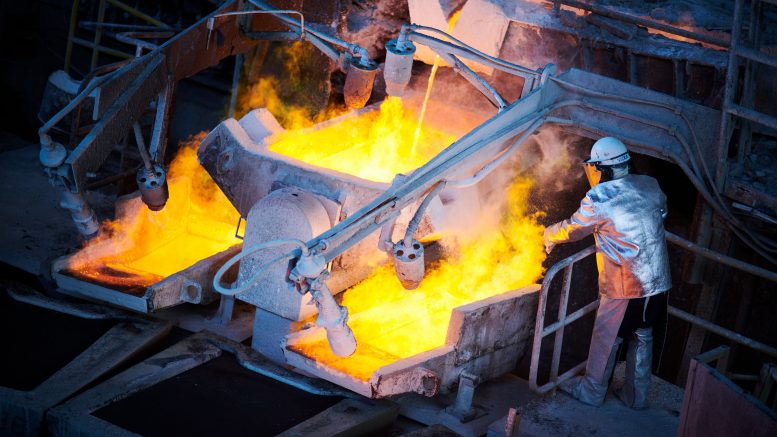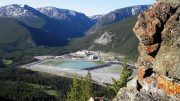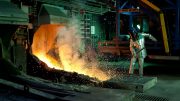At Glencore’s Investor Day in early December, CEO Ivan Glasenberg kicked off his presentation by talking about how the commodities giant is “steering a Paris Agreement alignment strategy while meeting the growing everyday needs for affordable and reliable energy infrastructure and transportation of the future.”
The long-time mining executive declared Glencore is determined to meet its net zero CO2 emissions targets by 2050 and in the medium term is targeting a 40% reduction in Co2 emissions by 2035 – in part by reducing thermal coal production. The company, he said, is “clearly ambitious and can achieve these targets on both Scope 1, 2 and 3 CO2 emissions.”
“Our model allows us to adapt to this because we have the right commodities leading to this transition of energy which is taking place in the world,” he declared. “We have got copper, we have cobalt, we have got zinc and we have nickel. We also have great assets to date in these commodities, and you will see we have long-life assets … and are at the lowest quartile cost curve in most of the commodities we produce today.”
Still, Glasenberg warned that with population growth and the move toward a low carbon future with the electrification of energy supply, the world will require enormous amounts of energy metals, and directed participants on the call to look at a graphic in his slide-deck illustrating how much demand will grow for copper, nickel, cobalt, and zinc.
Pointing out that the world consumes 29.6 million tonnes of copper annually, Glasenberg noted that miners will have to produce 60 million tonnes of the red metal annually by the year 2050, to meet demand. Global nickel production will have to grow from the 2.5 million tonnes consumed a year currently to 9.2 million tonnes by mid-century; while cobalt supply will have to grow from 129,000 tonnes a year to 507,000 tonnes, and zinc production will have to more than double from 13.9 million tonnes per year consumed currently to 28.8 million tonnes.
“You can see demand growth for these metals is massive over the next thirty years and the mining industry is going to have to step up to the plate to produce these extra metals and that’s going to be very difficult to achieve.”

Glencore personnel at the Katanga copper project in the Democratic Republic of Congo. Credit: Glencore.
Drilling down into the data, Glasenberg noted that between 2010 and 2019, copper supply has grown at a rate of half a million tonnes annually, but will have to grow at an annual rate of 1 million tonnes per year between now and 2050. Nickel production, which grew at a rate of 111,000 tonnes per year between 2010 and 2019 will have to pick up to 225,000 tonnes per year over the next thirty years; while cobalt grew at 7,000 tonnes per year over the previous decade and will have to reach 13,000 tonnes of new production each year. Zinc production must grow at an annual rate of 523,000 tonnes a year between now and 2050, after growing at just 262,000 tonnes per year between 2010 and 2019.
Turning specifically to copper, he noted that mining companies are going to have to go farther afield to find it. “There’s limited shovel-ready projects around the world for new copper mines,” he said. “The world has a challenging task to meet this new demand and it’s going to have to go to new geographies, it’s going to have to go to new locations where they lack infrastructure, and you don’t have the mining expertise in those new areas.”
Commodity analysts have already been forecasting shortages of the red metal. In a Dec. 20 research note, analysts at Bank of America Merrill Lynch warned that “copper mine supply has been virtually unchanged since 2017” and said they expect “a global copper market deficit in 2021.” The analysts noted that mine supply growth “has been low in recent years, as miners had cut back capex since 2012/2013,” and the situation has been exacerbated by slowdowns in production in major copper producing countries Chile and Peru.
Copper metal for three-month delivery on the LME in mid-December reached a seven-year high at US$3.62 per lb. (US$8,000 per tonne). “Copper has in our view the strongest fundamentals going into 2021,” the BofA analysts wrote, forecasting that the metal will average US$3.44 per lb. (US$7,588 per tonne) in 2021. Nickel will average US$6.22 per lb. (US$13,704 per tonne) in 2021; zinc US$1.17 per lb. and cobalt US$15.00 per lb. Uranium, the bank forecast, is set to rise to US$34.38 per lb., while silver, used extensively in solar panels, will average US$29.13 per ounce. It also said the rare earths metals market is “set to be moving into deficit, unless higher prices incentivise new supply.”
In a recent report developed by the Climate-Smart Mining Team of the World Bank’s Energy and Extractive Global Practice, the authors noted that “a low-carbon future will be very mineral intensive because clean energy technologies need more materials than fossil-fuel-based electricity generation technologies” and cited as an example that 3,000 solar panels needed for 1 megawatt (MW) of capacity of solar PV “means that a 200 MW solar PV project could be as big as 550 American football fields.”
The report, “Minerals for Climate Action: The Mineral Intensity of the Clean Energy Transition,” also pointed out that under a 2 degree scenario, graphite, lithium, and cobalt “will need to be significantly ramped up by more than 450% by 2050—from 2018 levels—to meet demand from energy storage technologies.”






Be the first to comment on "Demand for energy metals “will be massive” Glencore CEO says"